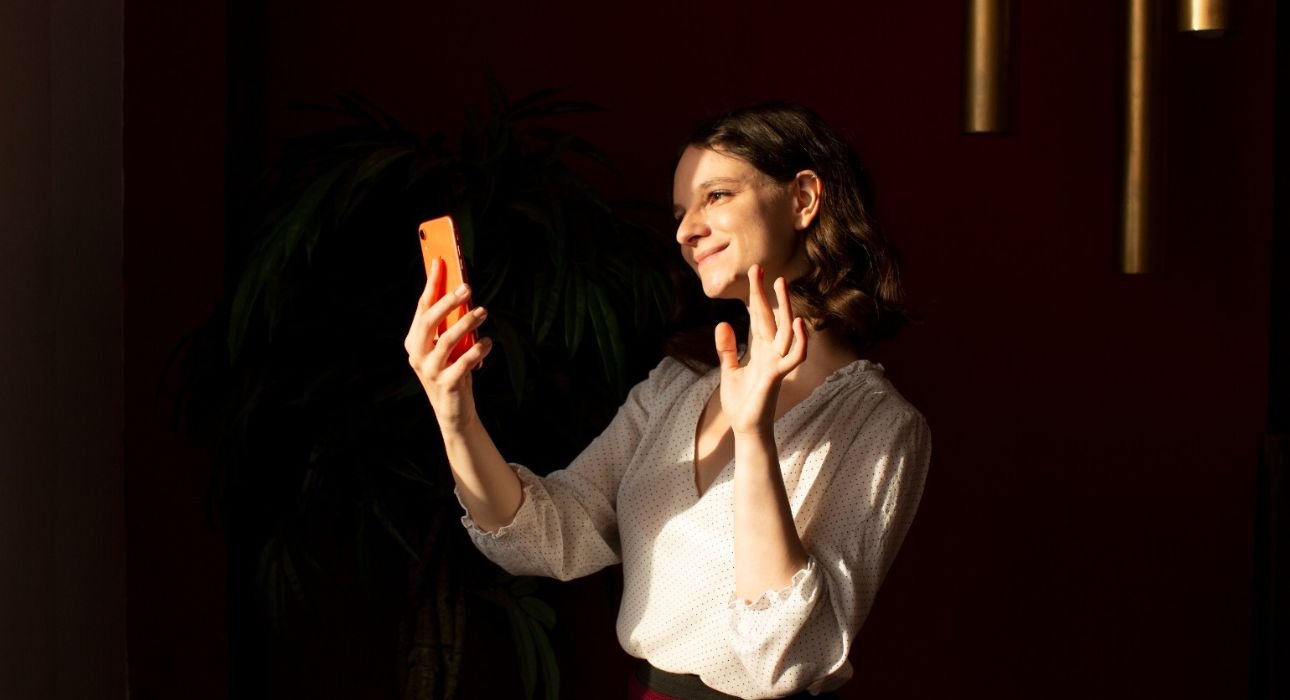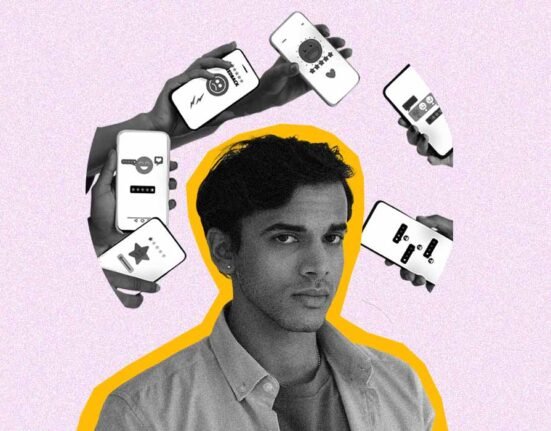Over the last ten years, Instagram has gone from being a simple photo-sharing application to a significant cultural platform where people flaunt their lifestyles, accomplishments, and identities. Rather than serving as a platform of everyday connection, Instagram now functions as a curated display of happiness and success. The logic of likes, followers, and algorithmically determined visibility has in some way changed how people value success and self-worth (Marwick, 2013). While users may experience happiness when sharing happiness from small moments. They also must live with an ongoing shadow of comparison and performative authenticity (Chou & Edge, 2012).
Read More: How Social Media Success Stories Make You Feel Behind
The Architecture of Visibility
The infrastructure of Instagram is based on the notion of visibility. The features of the application focus on likes, comments and the number of followers, operating as a type of attention economy in which users compete for attention (Hearn, 2017). The algorithm favours what receives social engagement first, thus measuring value not through a notion of authenticity but a perception of relevance to the community. This reliance on the quantification of attention influences users to build themselves as marketable personas, which researchers term micro-celebrity performance.
The design of the implementation turns people’s mundane experiences into commodities. And creates the notion that success is when one achieves visibility (Hearn, 2017). With time, visibility conflates with value; being visible elicits significance (Hearn, 2017). The app’s design subtly teaches users to quantify emotional value with digital metrics rather than rely on internal emotional satisfaction.
From Connection to Comparison
While Instagram started as a way to socially connect, it has now encouraged unrelenting social comparison. Social comparison theory suggests that people assess their performance and value themselves by comparing themselves with others (Festinger, 1954). With Instagram, comparison is amplified by selective self-presentation by posting idealised snapshots of oneself while omitting moments of failure or boredom (Chou & Edge, 2012).
Evidence suggests that passive observation of others’ highlight reels is correlated with feelings of envy, loneliness, and lower life satisfaction. Instagram becomes a digital mirror that evokes feelings that success is within reach, even though it is always elusive, creating a psychological loop: inspiration and inadequacy, hope and hollow self-doubt.
Curated Authenticity and the Illusion of Real Life
The irony is that the more users pursue authenticity, the more curation they engage in online. The cultural expectation of being “real” has birthed a new aesthetic that pulls together staged air quotes, messy hair selfies, unfiltered captions, or admitting to difficulty, while also being staged (Abidin, 2020). This sense of “calibrated amateurism” confirms that the authenticity still mediates between reality and performance; the ambiguity of truth and performance makes authenticity a social currency (Abidin, 2020).
Users are taught self-disclosure on Instagram and share vulnerability only in a way that appears relatable yet curated for aesthetic appeal; therefore, success on Instagram is based not only on achievement but also on the construction of a personality that blends approachability and aspiration. Instagram institutes a trend whereby even vulnerability can be rolled into a form of aesthetic capital.
Emotional Economics of the Like
The “like” button may appear to be a simple design, but its psychological implications are substantial. Neuroscience research has shown that when social validation is received via social media on platforms like Instagram, our brain’s reward pathways are activated, and dopamine is released, which motivates our behaviour (Sherman et al., 2016). Every time there is a notification on our phone, we receive a microdose of validation from others that encourages us to increase
our posting frequency and create educational or otherwise engaging content. As the dopamine prey persists, intermittent reinforcement is established, which creates a behavioural addiction to social validation, where the search for affirmation is placing value above intrinsic motivation (Andreassen et al., 2017). The transactional emotional economy of “likes” creates a shift in the meaning and purpose of self-expression to a socially validated transaction, each “like” paying for a measurably authentic social experience.
Read More: Why Do We Like to Compare Our Lives With Others (And How Can We Stop)
Success as Spectacle
In the image-centric culture of Instagram, success becomes a form of display, rather than internal fulfilment. Vacations, luxury purchases, and personal milestones are merely props in a performance of success (Duffy, 2017). Instagram encourages spectacle – grand displays or photographic success – rather than subtler or private forms of fulfilment. Every day, happiness is no longer the value people seek, and instead, the pursuit of that perfect post continues.
However, this phenomenon is equally true for altruism; whether it is an activism effort or charity outreach, these deeds can still be converted to a brand opportunity (Marwick, 2013). This reflects Debord’s (1967/1994) idea of the society of the spectacle, in which social life is presented through images and appearances. Consequently, Instagram promotes the conception of success not as being meaningful, but as being perceived to be meaningful to others.
Read More: Trapped in Social Comparison?: The Psychology Behind Luxury Consumption
The Psychological Toll of Digital Perfection
Idealised imagery consumption incurs harsh mental health implications. Frequent usage of Instagram has been correlated with increases in levels of body dissatisfaction, depressive symptoms, and self-objectification (Fardouly& Vartanian, 2016), particularly in young women. This continuous flow of aesthetically perfected content creates an unrealistic standard that extremely few people come close to replicating offline. Even when users recognise that images have been filtered or edited, the emotional impact remains (Perloff, 2014).
Comparing oneself in this relentless manner generates feelings of impostorship – the feeling of being less successful or authentic than one’s peers. The cognitive consequence of comparing your own experience to the experiences of others highlights how Instagram’s visual culture shapes emotional experience – from the experience of being inspired, to the experience of being under pressure. It is through the due and pursuit of their digital and aesthetic perfection that individuals experience chronic self-evaluation and ultimately compromise true enjoyment.
Influencers and the Monetisation of Aspiration
The emergence of influencer culture has continuously blurred the boundaries between self-expression and commercial strategy. Influencers transform their day-to-day experiences into exploitable content, rendering personal experience capable of monetisation through sponsorships and collaborations with brands (Duffy, 2017).
By succeeding in monetize fame, their success stories will continue to suggest that people can attain wealth and notoriety simply if they have charisma and consistency. However, the experiences of the economy of aspirations mask the problematic nature of structural inequalities—only a small cohort of users will achieve financial returns, while the vast majority will rationalise the lack of financial outcomes as personal failures (Abidin, 2020).
Additionally, claiming relevance as an influencer adds to emotional exhaustion or burnout (Duffy, 2017). Thus, Instagram builds a paradoxical milieu where the personhood of happiness is both the product and the performance. People who engage on social media are looking for the same external validation that the influencer pursues.
The Paradox of Real-Life Fame: When Relatability Becomes a Brand
Public figures such as Emma Chamberlain, Kylie Jenner, and Alix Earle demonstrate how Instagram can legitimise authenticity as a valid currency. Chamberlain exemplifies a journey from quirky YouTuber to luxury fashion ambassador, proof that even “relatable” imperfection can be a brandable industry aesthetic (Lorenz, 2022). Her candid mockery, once a position against the overly polished presentation faux pas of the influencer system, was ultimately swallowed up by the very system she seemed to resist, i.e., making uniqueness a monetised tactic for engagement (Duffy, 2017).
Alternatively, Kylie Jenner occupies the other end of this spectrum, merging a carefully calibrated lifestyle promotion aspiration into a sense of personal identity, turning her posts into advertisement conventions (Abidin, 2016). Similarly, Gen Z influencer Alix Earle rose to fame by achieving a perceived “transparent” self-disclosure, but as sponsorships increased, authenticity ended up being optimised as a performative representation of visibility (Lynch, 2023).
In concert, the trajectories of these influencers expose the paradox of fame in the social media age; authenticity is only valuable as currency until it becomes saleable. On Instagram, vulnerability is now a brand strategy, and success is not based on a sense of fulfilment, but rather on metrics.
Resistance, Mindfulness, and Reclaiming Joy
Instagram is not inherently bad for our mental health, and its effect has to do with how aware we are of it. There are some users of the application who practice digital minimalism—curating their feed to emphasise creativity, education, or real-world connections (Newport, 2019). Researchers have even suggested ways to engage intentionally on Instagram, which may help mitigate its negative effects. The stress of comparison fatigue, such as following a variety of content and scheduling time for daily use. Movements that aim to promote “unfiltered” posts or “photo dumps” on the platform are attempts to regain spontaneity and push back against the expectation from the “algorithm”.
Mindfulness practices can help users reconstruct their practice of Instagram by separating self-worth from social media acknowledgement and reflecting on their own fulfilment of engagement instead of an outside source (Fredrickson, 2001).
Conclusion
Instagram has not only reflected twenty-first-century desires; it has also rewired them. By merging visibility with validation and identity, it reshapes perceptions of success and the ways people pursue success. What was once celebrated as a small joy–friendship, creativity, shared experiences–now coexists with darker forces such as comparison, anxiety, or performing-identity.
However, with awareness comes agency: recognising these mechanisms offers the ability to engage with social media based upon critical consciousness and not passive consumption. When users understand the precariousness of weighing validity produced from the world of ‘likes,’ the fate of Instagram rests on whether they can remember that a life worth living is an experience, not a ‘like.’
FAQs
1. How does Instagram influence our perception of success?
Instagram blurs the line between real achievement and curated image. Constant exposure to glamorous lifestyles and highlight reels makes people measure success by appearance and popularity rather than fulfilment or effort (Marwick, 2015). Over time, this rewires our emotional reward system to associate validation with visibility.
3. What psychological effects can this have on everyday users?
Regular users often experience anxiety, self-comparison, and “success fatigue.” Even positive content can generate subtle pressure to appear accomplished, leading to feelings of inadequacy or burnout, especially among young adults (Chou & Edge, 2012).
4. Can authenticity exist on a platform built for performance?
Yes—but only in limited ways. True authenticity often conflicts with the algorithm’s demand for engagement. Many creators, such as Emma Chamberlain or Alix Earle, begin authentically but eventually face pressure to monetise their “realness”. What starts as self-expression easily becomes strategic branding.
5. How can users build a healthier relationship with Instagram?
Setting boundaries—such as limiting screen time, curating one’s feed, and following content that inspires rather than compares—helps restore perspective. Practising mindfulness while scrolling and engaging with genuine, value-driven creators can make social media more supportive than stressful.
References +
Abidin, C. (2020). Instagram: Visual social media cultures. Polity Press. Andreassen, C. S., Pallesen, S., & Griffiths, M. D. (2017). The relationship between addictive use of social media, narcissism, and self-esteem: Findings from a large national survey. Addictive Behaviours, 64, 287–293.
Appel, H., Gerlach, A. L., & Crusius, J. (2016). The interplay between Facebook use, social comparison, envy, and depression. Current Opinion in Psychology, 9, 44–49.
Chou, H. T. G., & Edge, N. (2012). “They are happier and have better lives than I am”: The impact of using Facebook on perceptions of others’ lives. Cyberpsychology, Behaviour, and Social Networking, 15(2), 117–121.
Debord, G. (1994). The society of the spectacle (D. Nicholson-Smith, Trans.). Zone Books. (Original work published 1967) Duffy, B. E. (2017). Not getting paid to do what you love: Gender, social media, and aspirational work. Yale University Press.
Fardouly, J., & Vartanian, L. R. (2016). Social media and body image concerns: Current research and future directions. Current Opinion in Psychology, 9, 1–5.
Festinger, L. (1954). A theory of social comparison processes. Human Relations, 7(2), 117–140.
Fredrickson, B. L. (2001). The role of positive emotions in positive psychology: The broaden-and-build theory of positive emotions. American Psychologist, 56(3), 218–226.
Hearn, A. (2017). “Verified”: Self-presentation, identity management, and selfhood in the age of big data. Popular Communication, 15(2), 62–77.
Marwick, A. E. (2013). Status update: Celebrity, publicity, and branding in the social media age. Yale University Press.
Newport, C. (2019). Digital minimalism: Choosing a focused life in a noisy world. Portfolio. Perloff, R. M. (2014). Social media effects on young women’s body image concerns: Theoretical perspectives and an agenda for research. Sex Roles, 71(11–12), 363–377.
Sherman, L. E., Greenfield, P. M., Hernandez, L. M., & Dapretto, M. (2016). Peer influence via Instagram: Effects on brain and behaviour in adolescence and young adulthood. Psychological Science, 27(7), 1027–1035.













Leave feedback about this